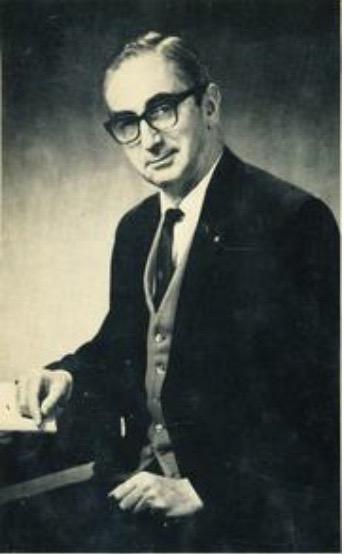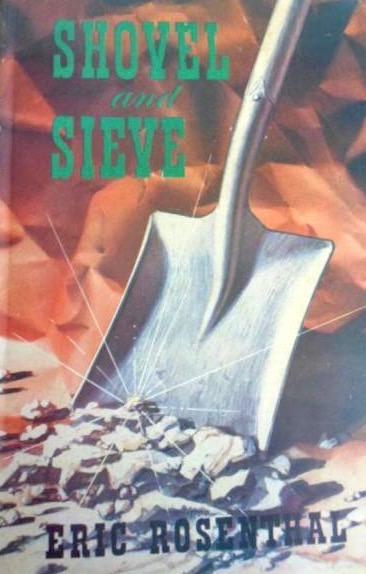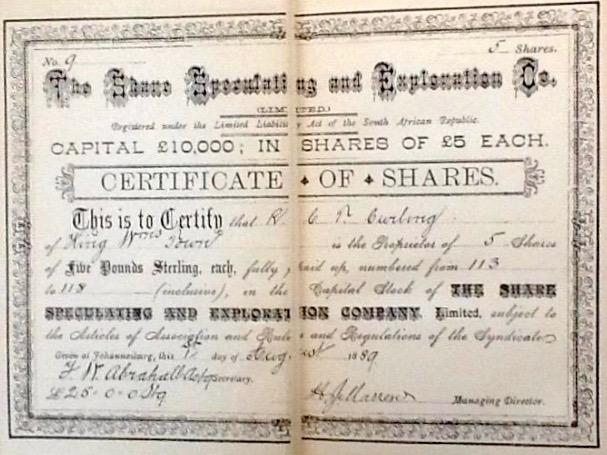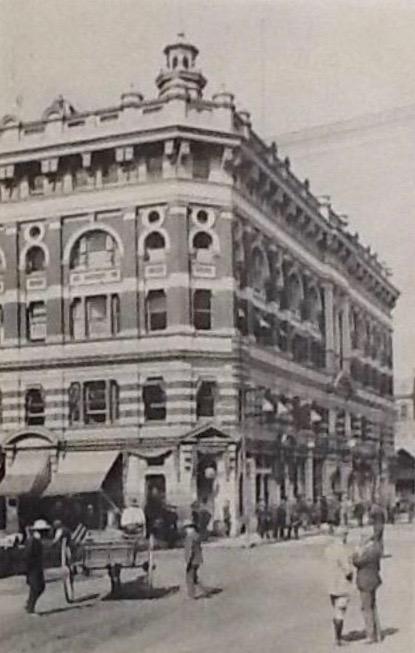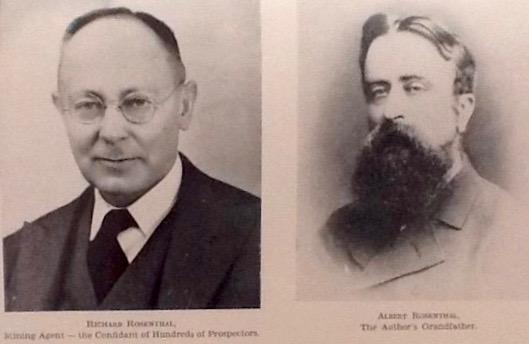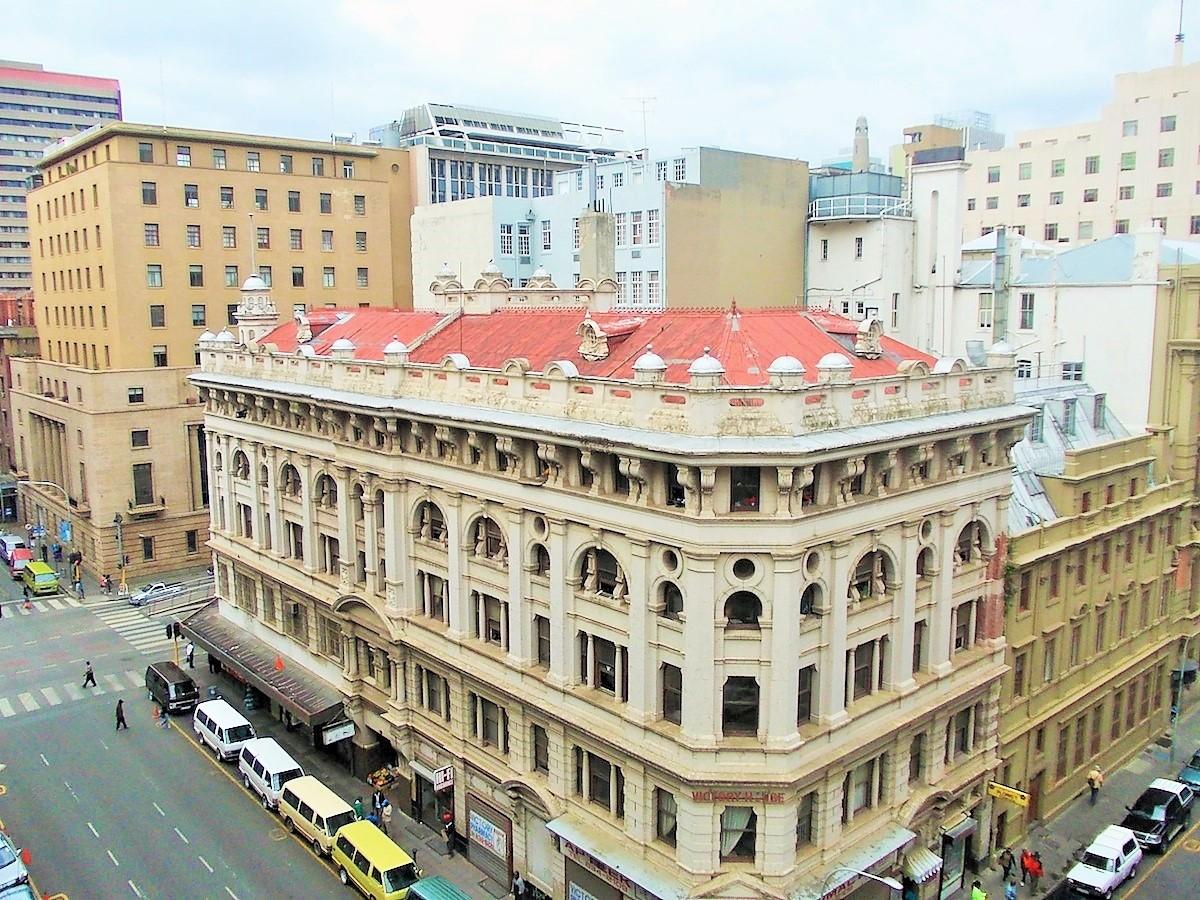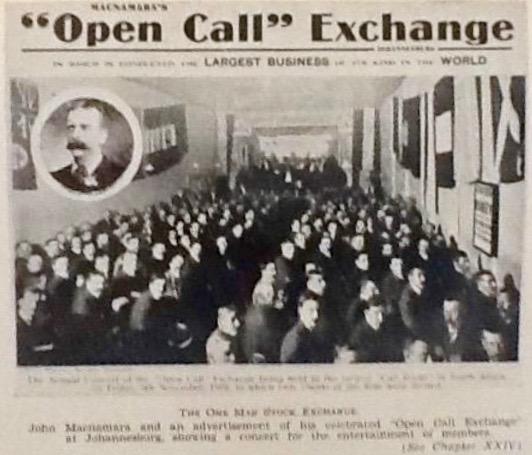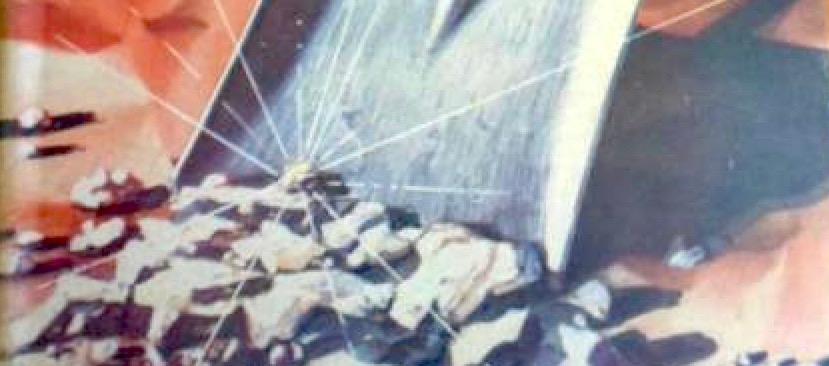
Eric Rosenthal (1905-1983) was a prolific writer. The bibliography of his books in his Wikipedia entry runs to 50 books. I have collected most of them. He wrote non-fiction history about South Africa. His style was light and entertaining. He was a raconteur. He captured yarns and stories about the past and he loved drawing out the characters of early Johannesburg. Rosenthal was trained as a lawyer but chose journalism and writing for a living. His books were popular in their day with large print runs and are therefore readily available today. I think they are moving into the collectable category though still not very expensive.
Eric Rosenthal 1905-1983 - Cape Town and Johannesburg Man
My interest in Rosenthal was recently rekindled when I found a written manuscript in a Johannesburg archive dealing with the history of engineering in South Africa. I wondered if it had ever been published, seemingly not, although I know of his book Girders on the Veld. This week I called on a warren of a shop in Kensington (Granny’s Attic on Queen Street) and Jackie, the gregarious and generous owner who clears houses and helps all who come her way, pointed to a dusty box and said ‘help yourself before I dispatch to the Salvation Army.’ My choice find was Rosenthal’s Shovel and Sieve. There is no date of publication but Roger Webster’s Fireside Tales dates it as 1959. This is quite likely as it has the feel of a fifties book belonging to the Howard Timmins publishing stable; though in the case of this book it was published by Howard Timmins of Cape Town for George Allen and Unwin of London and printed by Nasionale Pers Beperk. Hence there is some interesting publishing history wrapped up in these arrangements.
Book Cover
I then also found that the book Shovel and Sieve was part of an online exhibition presented by the University of Johannesburg, the Goldfields Revisited. The curator included this book in a selection of eleven titles drawn from the UJ library putting the book in the context of early gold mining on the Witwatersrand.
As with almost all of Rosenthal’s books there are no footnotes nor a bibliography. Shovel and Sieve has the advantage of an index, a good selection of unusual photographs (which are now greatly prized) and the front and back end paper is a delightful illustration of a share certificate dating from 1889. It is a share certificate that immediately captures the fever of speculation and mad aspiration of the early days of Johannesburg as a gold field. A Mr Curling of King Williamstown purchased five shares of five pounds sterling each, nos 113-118 in 1889 in the Share Speculating and Exploration Company Limited. The certificate was issued in Johannesburg. Surely this was a ticket to lose money. Today though it has a rueful appeal of a lost cause.
The Share Certificate
Rosenthal’s foreword presents the book as a monument “to that lively and unhonoured fraternity of South Africans I knew as a boy, the prospectors who searched for gold and other mineral wealth – often without success, but never without a dazzling optimism. Others made the missions; they had the fun.” Rosenthal takes us across the happy mineral hunting ground of South Africa, from the Witwatersrand to Knysna, from Palabora to Irene. The hint of possible riches from minerals, be it gold, diamonds, cinnabar, tin, iron or copper, the tough pioneering prospectors trailed across the veld with their tents, keen eyes, experience and the most elementary of tools. Rosenthal brings to life these prospectors who were old men propping up bars or sitting on park benches when Rosenthal was a young man. He also introduces the inventors, detectives, the magnates and the stock brokers. This book has to be read and savoured because it captures the voice and stories of the early prospectors.
I was recently given a copy of a November 1886 plan drawn by Auret Pritchard, early surveyor, of the Main Reef and Paarlshoop dating from November 1886. The original is now owned by Mr Werner Kirchoff who inherited it through the surveying fraternity. There is much of interest in the plan not least of which is the signature of Pritchard and that this was the document which Pritchard (of Pritchard Street fame in Johannesburg) presented to John Hunter Maclea. Rosenthal writes about Pritchard and John Maclea. Here is the story behind the rivalry between the Rand Pioneers and the Pioneers of the Transvaal Goldfields headed by MacLea. MacLea’s organization would only accept people who had come to the Transvaal Goldfields before 1887 whereas the Rand Pioneers stretched their admission criteria to ultimately include later (but still early) immigrants to Johannesburg. It was MacLea who drew the earliest map of Ferreira’s Mining camp (see the insert in Anna Smith’s Pictorial history of Johannesburg).
The theme that links all the prospecting types and characters together was their appearance in the offices of Richard Rosenthal at 13 and 14 Permanent Buildings, corner of Fox and Harrison Streets, Johannesburg. Richard Rosenthal’s business was that of “Mining and Estate Agent” and while the estate side of the business yielded little, the mining side brought prospectors with their samples to the office on a daily basis. The characters described were all men who Eric Rosenthal met or knew about because of his father’s activities.
Permanent Buildings
Rosenthal also tells the story of his own family including grandfather Albert Rosenthal who came to the Cape in the 1850s and became caught up with searching for diamonds. The story is told of Albert Rosenthal showing Northern Cape diamonds to a mineralogist in London two years ahead of the recognized date of discovery of Cape diamonds and the stones being dismissed as “Brazilian”. Albert Rosenthal died a poor man. His son, Richard Rosenthal (Eric’s father) came to Johannesburg in 1889 and he had the advantage of being a gold assayer. He was resourceful and tried dabbling in astronomy, prospecting for gold on Lions Head, being a not very successful estate agent and then heading back into mining. He returned to Cape Town without an elusive gold fortune but ultimately moved from Cape Town to the Witwatersrand in 1908 with his family and a three year old Eric. The rich seam for Eric Rosenthal was in writing about the characters who came into Permanent Buildings to have their mining dreams turned into reality and a fortune guaranteed.
Richard Rosenthal and Albert Rosenthal - the father and grandfather of Eric Rosenthal
Victory House or Permanent Buildings as it was first named is a building of some age and distinction. Built in 1896-7 (32-34 Harrison Street), it is a late Victorian five storey building with ornate fanciful decorative features. It is a heritage building of note. The original Permanent part of the name derived from the building society association, the South African Permanent Mutual and Investment Society which was founded in Kimberley in November 1883. The architect was W H Stucke and the building had the distinction of having the first lift in the town. The lift, manufactured by the firm Waygood in England, was imported and was described as “a technological marvel, complete with a safety apparatus; it also boasted a polished oak cage and an upholstered seat” (click here for more details). Rosenthal explains that part of the building was owned by an R S Scott who together with Emanuel Mendelssohn had started the Diggers News (the earliest Johannesburg daily in 1887). Scott owned the northern part of the building and lived on the top floor, sharing the lift and ornate cast iron staircase with the building society.
The really fascinating bit of history is that it was in Permanent Buildings that Gandhi encountered the liftman (Mr Hellett), a retired trooper of the Natal Mounted Police who refused to convey Gandhi in his lift. Gandhi had arrived for a meeting, declined to climb the stairs and a whole long story as to how the matter was resolved has to be located elsewhere. The story of Gandhi and the liftman of the Permanent Buildings has taken on a mythic quality. The name of the building changed to Victory House after the Allied victory in the Second World War in 1945. There is an extensive inventory form (part of the Bruwer survey) of the building complete with early plans (click here to view) but our interest in this review is in the people who inhabited the building. Perhaps some of their ghosts still remain.
Victory House from above (The Heritage Portal)
Another fascinating story is that of John MacNamara who had his own private stock exchange in Johannesburg, the Open Call Exchange, pre World War 1 which appears to have been a combination of club, restaurant and place where one could trade in stocks unlisted on the official Exchange; for here was the opportunity to make your fortune in the Transvaal Pearl Fishing syndicate. Clearly the place for seedy people and it ultimately went out of business as “MacNamara’s style was so cramped by the increasing nastiness of the police and the competition from the real Stock Exchange”. Johannesburg in its first 25 years was definitely not yet “respectable”.
"Open Call" Exchange
The talent of Eric Rosenthal and the pleasure of this book as a good read and a collector’s item is that he brings the early prospectors, their world and their yarns to life. There are more losers here than millionaires. Whilst it is not a book about the Randlords, this is a book to treasure and enjoy as the ultimate raconteur’s ramble.
Kathy Munro is an Honorary Associate Professor in the School of Architecture and Planning at the University of the Witwatersrand. She enjoyed a long career as an academic and in management at Wits University. She trained as an economic historian. She is an enthusiastic book person and has built her own somewhat eclectic book collection over 40 years. Her interests cover Africana, Johannesburg history, history, art history, travel, business and banking histories. She researches and writes on historical architecture and heritage matters. She is a member of the Board of the Johannesburg Heritage Foundation and is a docent at the Wits Arts Museum. She is currently working on a couple of projects on Johannesburg architects and is researching South African architects, war cemeteries and memorials. Kathy is a member of the online book community the Library thing and recommends this cataloging website and worldwide network as a book lover's haven.

